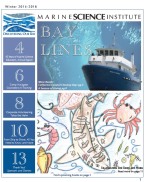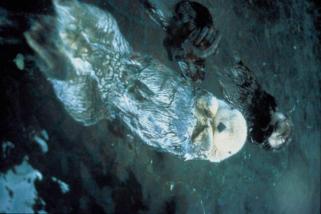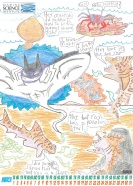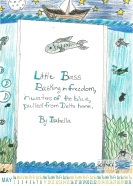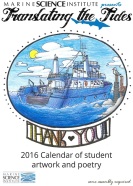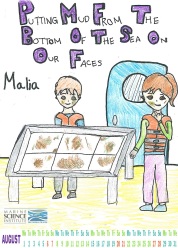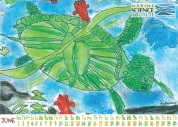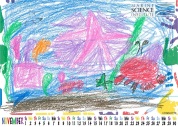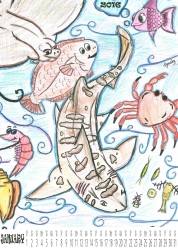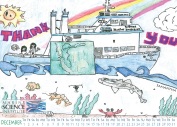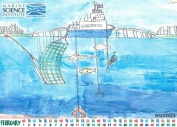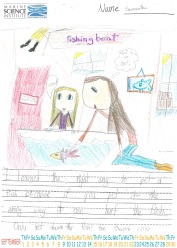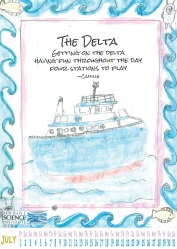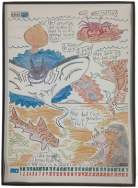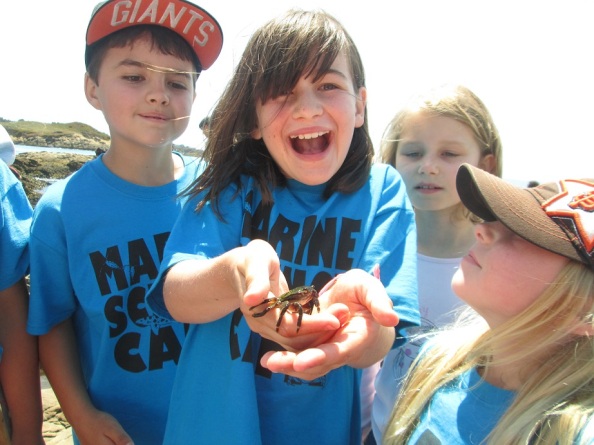#classroom activities
California sea lions love to swim fast and bark underwater. Read more about them below!
Common Facts: Scientific name - Zalophus californianus Average life span - 30 years or less Diet - Fish, shellfish, squid…
In September, Marine Science Institute (MSI) hosted its sixth annual teacher event, “From Ship to Shore, All You Need to Know and More!” This year’s event focused on MSI’s program alignment with the Next Generation Science Standards (NGSS), which were adopted by California in 2013. Through mini workshops, an information table full of resources and conversations with dedicated staff, teachers learned about their options for providing NGSS-aligned, hands-on programs for their students.
Along with mapping out precise alignment with NGSS, MSI has been busy creating a whole new selection of thematic field trip and classroom program bundles, an approach we call “multiple-exposure programming.” Multiple-exposure programs provide a benefit for students; students are able to assimilate new knowledge over time by connecting to prior learning and activities. One of the programs highlighted at the teacher event was MSI’s Scientific Method Combination – Marsh and Beach Exploration for grades 4 and higher. Teachers were able to participate in program activities, including collecting data from a mock wrack line–a line of debris (both natural and human-made) left on the beach after high tide. During the Scientific Method Combination – Marsh and Beach Exploration program, students collect and catalogue debris found at the beach, and then create a graph to display the data. The activities incorporate many scientific practices, including asking questions, carrying out investigations, and collecting and analyzing data.
Another new multiple-exposure opportunity presented at the teacher event was our Biomimicry Program. The NGSS emphasize engineering design as an essential part of science education for all grade levels. MSI’s Biomimicry programs target engineering requirements for grades 3-12. Teachers at the event used different senses as they walked blindfolded, identifying functions and possible adaptations of things found in nature. This activity exemplified the first step of the biomimetic design process through which students learn how to observe and interpret lessons from the natural world. These activities were adapted from www.biomimicry.org.
The fun continued as teachers enjoyed delicious appetizers by the Bay with a glass of wine in hand, asking questions and test driving MSI’s new website. In 2016, MSI will launch a new and improved website through which teachers can search programs by grades, easily locate classroom activities and browse printable guides that show MSI program alignment with the NGSS
We hope that the teachers who attended our event enjoyed learning about our programs and walked away with new ideas and resources. It was a pleasure to host them. We’d like to thank Russian Ridge Winery for the wonderful wine donation; Jackie Siminitus, Dragon Productions, Go To Chocolate, Applebee’s and Aqui’sCalMex for some really great raffle prizes; MSI Board Members Jim Crawford, Sean Caplice and Michael Odai for funding the event; and,Oracle for the amazing volunteers!Finally, thank you, teachers, for your hard work all year-round.
If you are a teacher who is interested in adding marine science into your classroom
please contact our office at 650-364-2760 or by email at [email protected]
This article was featured in our BayLines Winter Edition 2015-2016.
Marine Science Institute is a tax-exempt 501©(3)not for profitorganization
©2015. All Rights Reserved
Common Facts:
Scientific Name: Enhydra lutris
Average size – 4 ft.
Average life span – 23 yrs.
Protection status – Threatened
Average weight – 45-65 pounds
Diet – urchins, abalone, mussels, clams, crabs, snails and about 40 other marine species
Sea otters can be found along the Pacific coasts of Asia and North America. These fun fuzzy creatures spend most of their time in the water, but on the rare occasion they’ll come ashore to take a nap.
Sea otters like to float on their backs and even eat their food off of their stomachs while they float. They are known to utilize rocks to break open shellfish to eat and to pry them off the ocean floor. (They also can dive up to 330 feet while they are scavenging for food!) Female sea otters care for their babies while floating on their backs—they nurse them on their chest and teach them to hunt and swim at a very young age.
In the past, the population of sea otters was close to a million. Unfortunately, due to the fur trade and other human activities, their population made a drastic drop to 1,000-2,000 at the beginning of the 20th century. Today, thanks to preservation efforts, that number has once again risen to over 100,000.
“As predators, sea otters are critical to maintaining the balance of the near-shore kelp ecosystems. Without sea otters, the undersea animals they prey on would devour the kelp forests off the coast that provide cover and food for many other marine animals.”
So next time you see a sea otter, give it it’s space but take the time to admire it! Sea otters are a threatened and important species to our ocean’s ecosystem.
Sources:http://animals.nationalgeographic.com/animals/mammals/sea-otter/
Sea Otter (Enhydra lutris) mother with nursing pup in the Morro Bay harbor, Morro Bay, CA. 27 Oct. 2008. Michael “Mike” L. Baird, Canon 1D Mark III, 600mm f/4 IS with circular polarizer, on tripod.
http://www.defenders.org/sea-otter/basic-facts
Written by: Kari Shirley, intern
What is that? Is that this weeks Creature Feature? AND IT’S ABOUT ME!! Common Facts: Scientific Name: Enhydra lutris Average size - 4 ft. Average life span - 23 yrs. It is with great pride that we share with you our 16th annual Translating the Tides collection. This collection of poetry and artwork was designed by students who, through the Marine Science Institute’s hands on programs, directly encountered the wildlife of the San Francisco Bay, Pacific Coast, and Delta. Their beautiful work expresses not only what they have learned during our programs, but their new found appreciation of these aquatic habitats.
It is with great pride that we share with you our 16th annual Translating the Tides collection. This collection of poetry and artwork was designed by students who, through the Marine Science Institute’s hands on programs, directly encountered the wildlife of the San Francisco Bay, Pacific Coast, and Delta. Their beautiful work expresses not only what they have learned during our programs, but their new found appreciation of these aquatic habitats.
The 2014-2015 Translating the Tides artwork has been transformed into a printable 5×7 calendar and is available for download here
Translating the Tides is a creative contest run by Marine Science Institute (MSI) for students in grades kindergarten through college who participate in MSI’s hands-on marine science education programs.
Translating the Tides is a wonderful opportunity for students to express, in their own voices, what they have learned and what they want others to know about our aquatic environments.
We invite you to keep in mind the significant
and tangible impact your donation will make for students.
This article was featured in our BayLines Winter Edition 2015-2016.
Marine Science Institute is a tax-exempt 501©(3)not for profitorganization
©2015. All Rights Reserved
Shorelines and underwater habitats are the best classrooms for young students to learn about.
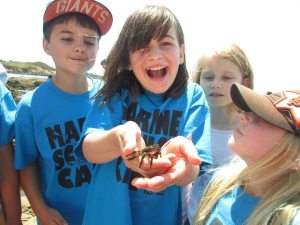
Now is the time to show your support for the Marine Science Institute. Each year, you can see the wonderful work we accomplish together , teaching science and inspiring environmental stewardship. In 2015, we provided 56,000 students with the opportunity to go out on the San Francisco Bay and learn about its unique ecosystem. As a supporter, you are a part of every…

We’ve cooked up a whole new batch of Exploratorium Science Snacks. Like our original snacks, our latest science activities are hands-on, teacher-tested, and use cheap, available materials you can find at home or around the classroom. Ready? Let’s check ‘em out!
1) A Little Atmosphere

(Subjects: Earth Science, Nature of Science)
2) Backyard Bug Bonanza

(Subjects: Biology, Environmental Science)
3) Bean Counter Evolution

(Subjects: Biology, Data)
4) Boyle-ing Water

(Subject: Chemistry)
5) Critter Comparison
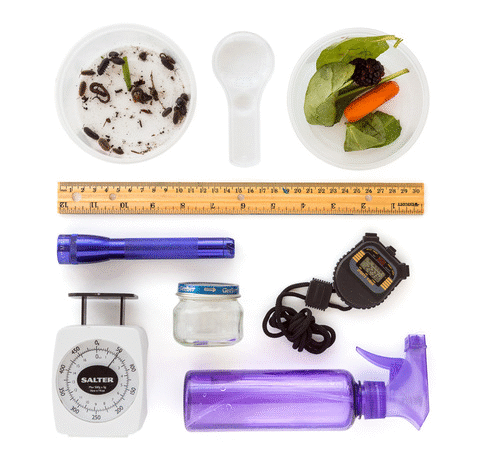
(Subject: Biology)
6) Curveball Demonstrator

(Subjects: Chemistry, Earth Science, Physics)
7) Hydraulic Battle
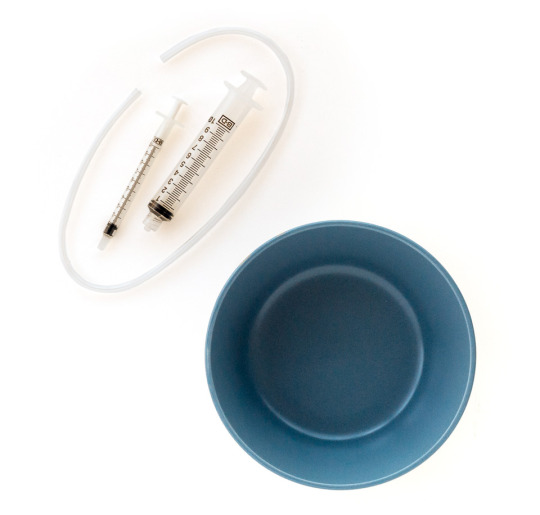
(Subject: Engineering and Technology, Physics)
8) Magnetic Atmosphere Model

(Subjects: Earth Science, Physics)
9) Pi Toss

(Subject: Mathematics)
10) Plankton Rainbow

(Subjects: Biology, Perception)
11) Self-Centered Globe
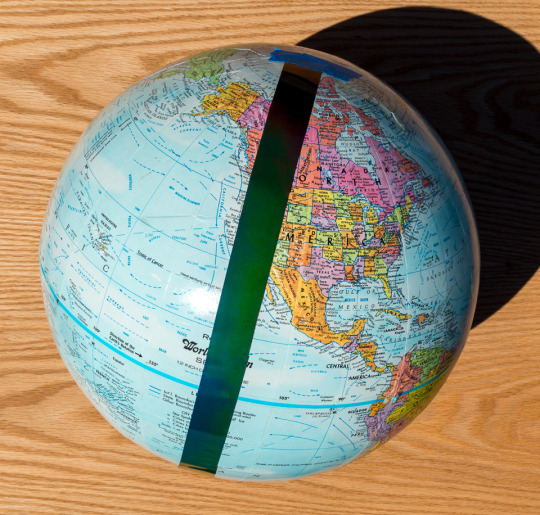
(Subject: Astronomy and Space Sciences)
12) Tiny Hot Pile
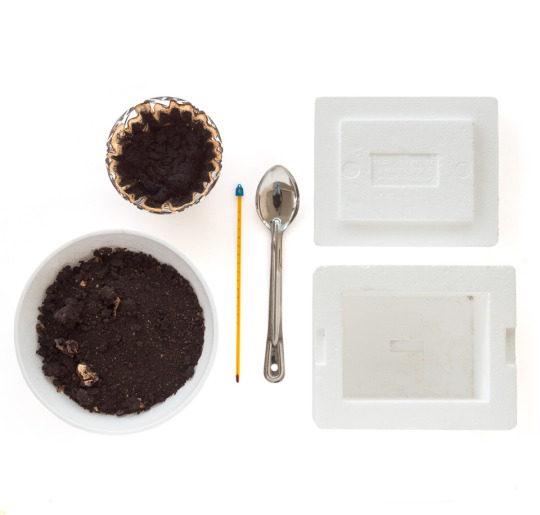
(Subject: Biology)
13) Where’s North?

(Subjects: Earth Science, Physics)
Hungry for more? Visit our Science Snacks page to find an array of mind-bending DIY experiments to do at home. And, if you try any of these, be sure to share a photo with us on InstagramorTwitterwith#ScienceSnackSunday. Happy snacking!


